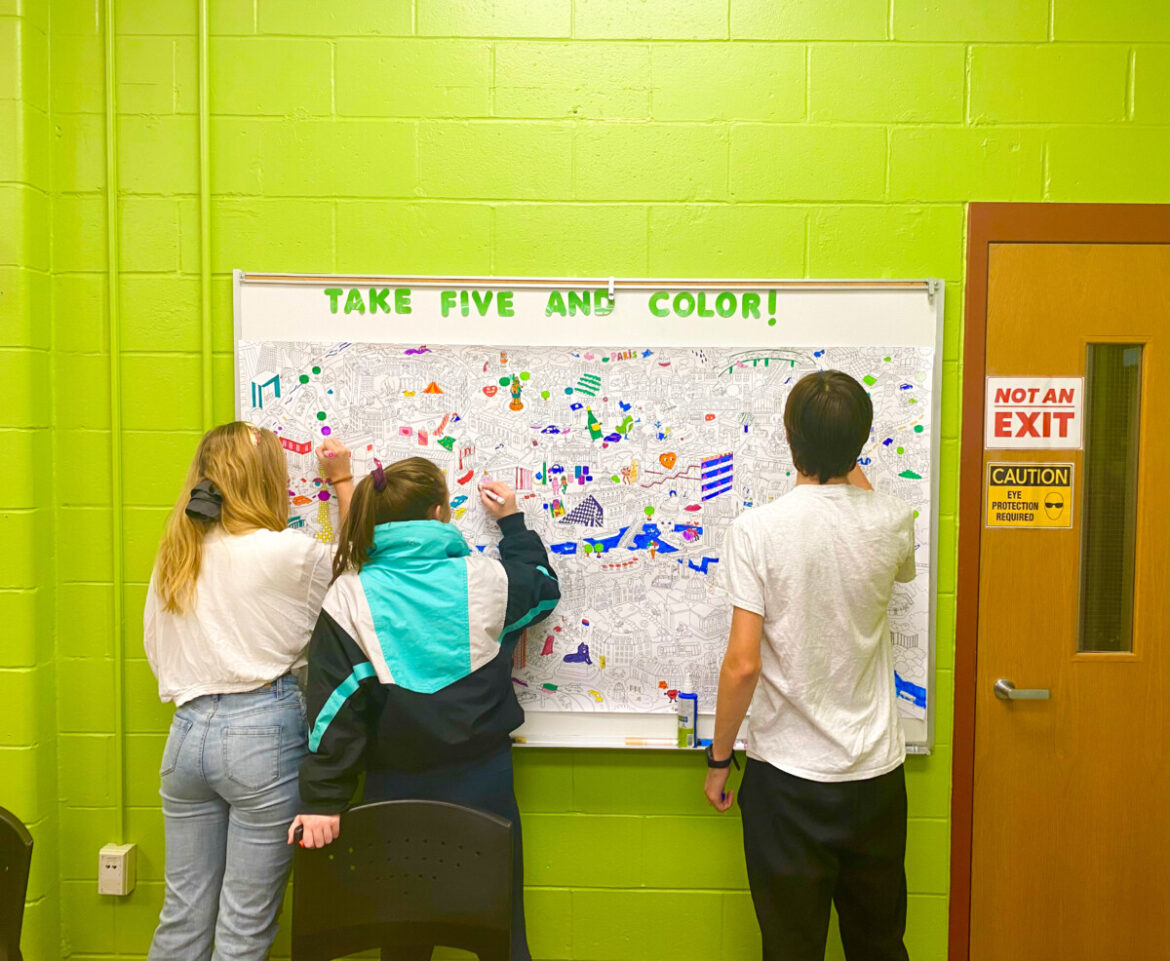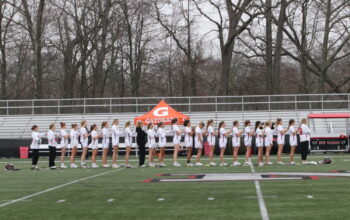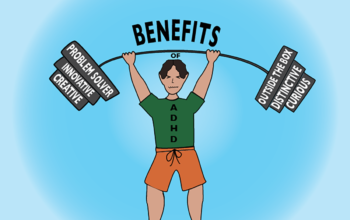Serena Platt, Editor-in-Chief
@splattcourant
Since the beginning of this year, mask breaks or “brain breaks” during each period are no longer mandatory, and therefore many teachers have shied away from giving any breaks for students in their classes. That being said, there are classroom environments around the school that are still working to create flexible and relaxed atmospheres for students.
Interior Design and Fashion Merchandising teacher Kelly Zilly is committed to allowing students to move freely in her classroom. “At the beginning of the class I give instruction, and after that it’s mostly hands-on independent work,” she said. “If I’m not in the front of the class giving detailed instruction, then students know they’re free to move as they please.”
One specific way Ms. Zilly implements stress relievers into her classes is through a new “Take 5 & Color” board on her wall where students can collaborate to fill in a detailed drawing. “Mr. Cebulski and I found the Take 5 & Color, and I thought that not only can students get the relaxation aspect out of that, but they can collaborate together,” Ms. Zilly said. “It’s cool because there are three teachers that teach in my room, so there are hundreds of students working on the board, and every day when I walk in there’s more and more filled in. It’s just another way for kids to take five minutes and relieve a little stress.”
Another project that Mr. Cebulski and Ms. Zilly collaborated on was painting the back wall of their shared classroom green instead of the preexisting white. “Mr. Cebulski and I agreed that the back area is a meeting space, so we wanted to designate it, and by painting the walls, we gave it a vibe,” Ms. Zilly said. “We’re also trying to get some whiteboard tables back there for more brainstorming. It’s a work in progress.”
Ms. Zilly is also an avid supporter of playing music during her classes. “There’s almost never a day that you walk into my room and I don’t have music on,” she said. “Usually I let my students vote on the genre or the artist, and I find it sets a vibe of being comfortable.”

Kate Shumway, a senior who has been in three of Ms. Zilly’s elective classes, reflects positively on Ms. Zilly’s flexible teaching style. “She lets us figure things out on our own, and she helps us along the way. I like this a lot because I learn better this way, by trial and error.” According to Kate, Ms. Zilly’s classes stand out amongst her others. “Some of my other classes have relaxed environments, but not to the same extent as Ms. Zilly’s classes,” she said. “I think other teachers should explore projects where students attempt the task on their own, and the teachers are there to help and assist you along the way.”
Senior Eve Lindberg has also had some experience in a classroom where assignments can be more flexible and creative. In her AP European History class, students were assigned to create a historical storybook based on their learning. “I thought going to the MakerSpace was a more fun, creative element,” Eve said. “I love art and I don’t really do it that much anymore, so it was fun to have that be a part of our learning.”
Eve would encourage more non-traditional assignments like this in the future. “A project like this helps you learn the material more and makes it more memorable,” she said. “I think if you can assess kids based on something that’s more fun for them, it definitely takes away stress as well as helps them to learn.
Geometry and Algebra teacher William Doyle has made an effort during each of his classes to give students creative, interactive breaks instead of having them take a walk around the school for a couple of minutes. “I’ve done exercises like Project Adventure in my class, where you all hold hands and try to unwrap yourselves without letting go,” Mr. Doyle said. “We’ve also done Pictionary, word searches, and drawing tutorials, which help you use a different part of your brain.”

Mr. Doyle believes that non-math related breaks help students to reset if they’re struggling with the math concepts. “To have a break that is math-related might make some people feel more defeated,” he said. “A break is something that is meant to trigger different responses. Sometimes we watch time-lapse videos, which is just mindless relaxation.” Mr. Doyle believes these methods will help increase productivity in the classroom. “If I spend 3-5 minutes on this, I feel that I can get better work for the remainder of class.”
While it may not be appropriate for every teacher to look into these more flexible, de-stressing teaching styles, it is worth considering, because there are so many options to change up the pace and atmosphere in the classroom. “I want kids to enjoy what they’re doing and learn at the same time,” said Ms. Zilly. “It’s important for students to learn and feel safe at the same time.”




